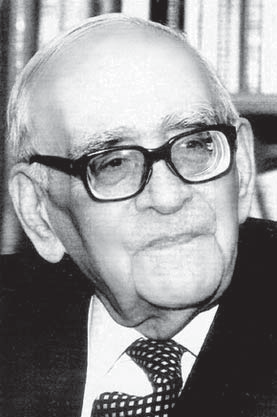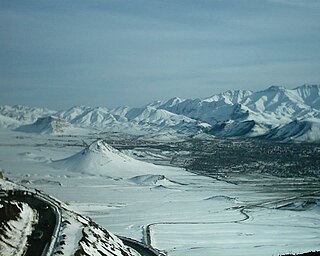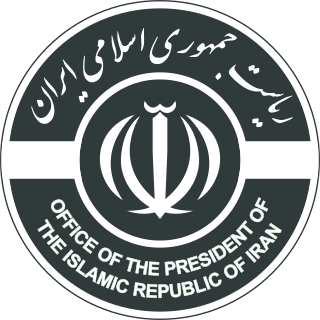
Mahmoud Hessabi was an Iranian nuclear physicist and senator. He was the minister of education in the cabinet of Prime Minister Mohammad Mosaddegh from 1951 to 1952.

The Academy of Persian Language and Literature (APLL) is the regulatory body for the Persian language, headquartered in Tehran, Iran. Formerly known as the Academy of Iran, it was founded on May 20, 1935, by the initiative of Reza Shah, the founder of Pahlavi dynasty.

Markazi Province is one of the 31 provinces of Iran. The word markazi means "central" in Persian and the province lies in central Iran. Its capital is the city of Arak.

Tafresh is a city in the Central District of Tafresh County, Markazi province, Iran, serving as capital of both the county and the district. Tafresh is located amidst high mountains 222 kilometres (138 mi) southwest of Tehran.
Mahmud is a transliteration of the male Arabic given name محمود, common in most parts of the Islamic world. It comes from the Arabic triconsonantal root Ḥ-M-D, meaning praise, along with Muhammad.

Elahieh is an affluent neighborhood in northern Tehran. While it is now a residential area with expensive apartments, it was previously home to large, privately owned gardens. It is home to the Iranian Art Museum Garden.

Ahmad E'ta, better known by his pen name Ahmad Mahmoud ; was a prominent Iranian novelist from Ahvaz city in the southwest of Iran.

Mahmoud Namjoo was an Iranian bantamweight weightlifter. He competed at the 1948, 1952 and 1956 Olympics and placed fifth, second and third, respectively. At the world championships he won three gold, one silver and two bronze medals between 1949 and 1957, becoming the first Iranian weightlifter to win a world title. Namjoo was also the first Asian weightlifter to set a world record; during his career he set four: one in clean and jerk in 1949 and three in the total, in 1948, 1949 and 1951.

The Islamic Republic of Iran officially recognises Palestine as a state. Ali Khamenei, the Supreme Leader of Iran, rejects a two-state solution and implies that Palestine is inseparable, while Iran's former President Mahmoud Ahmadinejad called for a free referendum for the entire Palestinian population, including Arab citizens of Israel, to determine the type of government in the future Palestinian State, while reiterating that establishment of a Palestinian State alongside Israel would "never mean an endorsement of the Israeli occupation".

Mahmoud Ahmadinejad is an Iranian principlist and nationalist politician who served as the sixth president of Iran from 2005 to 2013. He is currently a member of the Expediency Discernment Council. He was known for his hardline views and nuclearisation of Iran. He was also the main political leader of the Alliance of Builders of Islamic Iran, a coalition of conservative political groups in the country, and served as mayor of Tehran from 2003 to 2005, reversing many of his predecessor's reforms.

The Physical Society of Iran (PSI) is Iran's professional and academic society of physicists. PSI is a non-profit organization aimed at establishing and strengthening scientific contacts between physicists and academic members of the country's institutes of higher education in the field of physics.

Mahmoud Dowlatabadi is an Iranian writer and actor, known for his promotion of social and artistic freedom in contemporary Iran and his realist depictions of rural life, drawn from personal experience. In 2020, he wrote and recited a work called Soldier for the Art of Peace global project, composed and arranged by Mehran Alirezaei. He has collaborated with this project.

Mahmoud Farshchian is an Iranian painter and educator. He was a master of Persian miniature painting.

In United States v. Banki, 685 F.3d 99 the Second Circuit Court of Appeals overturned the conviction of Mahmoud Reza Banki. Banki had been convicted of multiple crimes related to allegedly conspiring to violate United States sanctions against Iran by transferring large amounts of money — totaling some $3.4 million — from Iran to the United States.
Mahmoud Reza Banki is an Iranian-American scientist, management consultant and startup executive. Born in Tehran, Iran, Banki immigrated to the US to attend college and became a naturalized US citizen in the 1990s. In January 2010, Banki was arrested and charged with violating US sanctions against Iran by the United States Attorney's office in New York City. Ultimately Banki won his case on appeal, and it was permanently closed in July 2012. Banki spoke about his case at a TED Talk in 2014, presenting a case for change in criminal justice. As of 2015 a documentary film about the case was being made. In The Moth podcast released January 2017, Banki spoke to the personal toll of the ordeal. Banki has also spoken before various audiences for the cause of improving the criminal justice system. As of 2022, Banki was Chief Financial Officer and Chief Strategy Officer at leading streaming company Tubi. On January 20, 2021, Banki received a full and unconditional pardon from the President of the United States.

Presidential Administration of Iran consists of the immediate staff of the current President of Iran and multiple levels of support staff reporting to the President. It is located in Pasteur Street.

The Museum of the Islamic Era is one of the museums of the National Museum of Iran, located near Imam Khomeini Square, Tehran, Iran. Most of the objects in this museum are selected from the works of scientific excavations or prestigious collections such as Khānegāh and Shrine Ensemble of Sheikh Safi al-Din. The National Museum of Iran has two main sections: Museum of Ancient Iran and Museum of the Islamic Era; The Museum of the Islamic Era is dedicated to displaying historical monuments and objects of post-Islamic Iran.

The cabinet led by Haj Ali Razmara was formed on 26 June 1950 and succeeded the cabinet led by Ali Mansur who was in office between April and June 1950. Razmara was a lieutenant general at the imperial army and was serving as the chief of the general staff when he was appointed by the Shah Mohammad Reza Pahlavi as the prime minister. It was the 33rd and first military cabinet in Iran since 1924. Behrooz Moazami also argues that it was one of the cabinets which did not follow the political agenda of the Shah in addition to the cabinets of Mohammad Mosaddegh and those of Ahmad Qavam in the Pahlavi rule. The Razmara cabinet ended on 11 March 1951 three days after the assassination of the prime minister.
















